Review: With Cobalt8, Modal Electronics released a virtual analog Synthesizer, which de-dusts the VA concept & brings it to the modern synth age
“Virtual analog aka analog modeling synthesis is so 2000s.” That’s true, almost 20 years ago hardware VA synthesizers were the hot sh… Companies such as Alesis, Novation, Waldorf, and others released synths that emulated analog circuits with DSP power. Some do this very well, others less so.
Life goes on, and so does technology. The virtual analog trend later shifted to the VST platform on PC / Mac. To this day, thanks to increasingly powerful computers, developers are capable of emulating the sound of analog synths at very high authentic level. See U-he Diva or Synapse Audio The Legend, both of which are extremely close to the original Minimoog.
But there are also companies that are moving away from this perfection and want to reinvent virtual analog synthesis. See Modal Electronics with their new all-digital 8-voice Cobalt8 Synthesizer which is on the table for review.
Three Versions
The Modal Cobalt8 is available in three versions. In a desktop version for those who have an abundance of keyboards, another with 37 keys for “occasional” synth players, and one with 61-keys for keyboard virtuosos. Something for everyone. Modal Electronics sent over the Cobalt8 37 keys version for review. Like the 61, it has a velocity and aftertouch sensitive keybed from FATAR.
There is one thing that I don’t understand why Modal didn’t locate the interface on the 61 version centrally. Ok, they want to give you space for an iPad running the editor on it but the main interface in the middle, it would certainly be nicer.
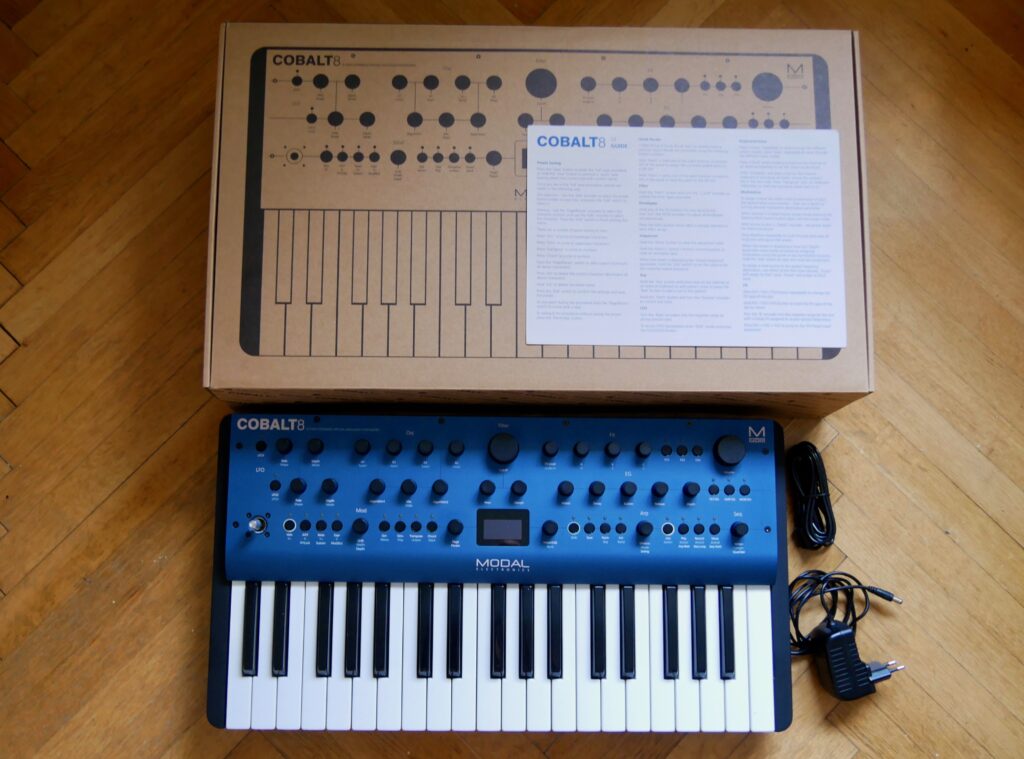
Unboxing
Unboxing a new synth is always an amazing moment. For some, it is so big that they let others participate in it in the form of a video. Unboxing the Cobalt8 was rather unfancy. It comes in a brown box with the synth and name printed on it. Very simple. Once unboxed, you can get the Cobalt 8, the power supply with various adapters, a USB cable and a clear, printed quick guide.
Plus points for this because the fun can start immediately without downloading anything extras.
Backside
There is a lot to discover on the back of the Cobalt8 series. Yes, all three version are identical. You get a headphones output, mono (L) & stereo (L/R) outputs, expression and sustain pedal input, audio input, sync in/out, MIDI In/outputs on 5-pin sockets, USB MIDI, and a power supply input with a dedicated switch.
A bit of a shame the Cobalt8M doesn’t have a USB host port with which you can plug in a USB keyboard for example. A feature that especially fits the desktop version and I would like to see it more on modern synths.
Interface
Whether a synthesizer is loved or not always depends on the sound alone, but also on a good tweakable interface. Modal did a lot right in my opinion. The Cobalt8 interface is intuitive, and well set up. There are encoders for all important functions such as the oscillators, filters, envelopes… Other functions, such as switching to another envelope, have to be done by pressing a dedicated button. But that’s easy to do and has no negative influence on the workflow.
Our beloved cutoff frequency as well as the volume parameter have larger knobs, which I really like. The knob feeling unfortunately remains a bit of a weakness with the Cobalt8 as well. There are endless encoders that go too fast for my feeling. They feel a bit hollow which dampens the urge to keep moving the knobs. A little more resistance and grip would certainly look good on them. A crystal-clear display joins the knob party that gives you information about all parameters.
For the most part, the interface is quick and easy to use. If you go deeper it can be more complicated. In these cases, the supplied editor is the best partner you can imagine
Innovative Oscillators
Modal Electronics is breaking new ground in virtual analog synthesis. You can see this clearly and impressively in the implementation of the oscillators. Instead of giving users the classic, recurring stable waveforms, Cobalt8 uses two independent oscillator groups, each containing 40 different algorithms (firmware update 1.1) each.
The way how they have implemented these algorithms is innovative as you can omit the steps: waveform selection, PWM, activate FM…All of these tedious steps have been taken away and replaced by algorithms that are easily operable with two macro controls (A1/B1 – A2/B2). With these, you can shape waveforms from very subtle to crazy.I n sound design you save a lot of steps to make complex sounds. Simple does not mean limited in this case.
The 40 algorithms not only offers classic shaping functions such as PWM, Sync or FM, but also more complex and unique ones like fractal synthesis, reverse, window, metal, ring mod, chaos, and more. Each algorithm has a shaping function that can be morphed continuously.
And with the oscillator mix you can mix both oscillator groups together, which opens up yet another sonic level. Plus you can also modulate these shaping “macro controls” with the built-in modulators or record them in a sequence.
But How Do They Sound?
Anyone expecting a top-notch emulation of an analog Synthesizer like U-he Diva / Synapse Audio The Legend will be disappointed. The novel, super-powerful oscillator section clearly shows that Modal Electronics did not focus on the most authentic analog-like sound. You can re-create the power and pressure of analog sounds nicely, but is more about virtual analog synthesis thought further.
Oscillator algorithms such as fractal synthesis, chaos, window, metal… are prime examples for this.This is not about the nicest sounding sawtooth wave but how to elicit new harmonics from classic waveforms. And the synth masters this task perfectly. From classic, fat analog-style sounds to wild, harmonic-rich timbres. Also dirty, bizarre and strange. The sound spectrum is huge and with every turn of the algorithms macros you discover new sound colors.
The algorithms are just fun because they constantly produce new timbres with a few tweaks. I especially like the wild algos that have little to do with the traditional VA idea.They sound very good, are very versatile, but, as I said, do not emulate a Roland or Moog Synthesizer.
Filter
The built-in filters, 8 in number, one for each voice, go in the direction of Moog. More precisely, Cobalt8 has a digital 4-pole morphable ladder filter, with switchable configurations. There are 4 types to choose from. Resonant low pass morphs from 4-pole lowpass through bandpass, to 1-pole lowpass. This loses volume if you apply high resonance, just like on a classic Moog ladder filter. The balanced lowpass has the same morphing characteristics but loses low end frequencies at higher resonance settings. The downer, the resonance capabilities are reduced.
Then, you have a balanced high pass that morphs from 4-pole high pass, through notch, to 1-pole high pass. The latter is the most exciting for me. It’s a balanced phase that morph controls the width and depth of the dual notches.
The filters sound very good and go well with the engine. But it lacks some bite and dirt for my sonic taste. A filter drive would be a nice feature update so that you can add more character to the filter. My personal highlight is the balance phase. It can achieve very own timbres like formant-like effects.
Two things are noticeable. On the one hand, the oscillators are very innovative and totally playful. The Modal team dared to do something unique here. When it came to the filters, they were less willing to experiment. They are very classic and down-to-earth.
Much too classic in my opinion. Here I would have liked to see more unique filter models with which one could tease out even more from the British digital sound machine. Like a comb filter or why not a Steiner Parker emulation. The DSP power should be available.
Effects
Let’s talk about the internal effects. Cobalt8 has 11 different, tweakable stereo effects: chorus, phaser, flanger (pos), flanger (neg), tremolo, LoFi, Rotary, stereo delay, ping-pong delay, x-over, delay, and reverb. These can be assigned in any three slots per patch. So you have one effect per slot and chains with up to three. The limitation of one effect type per chain is a bit of a shame. Thus multiple delays, choruses, or reverbs are not possible.
They are very easy to select and integrate into an existing signal chain with dedicated buttons (FX1, 2, 3) and encoders. Yes, the effect parameters can be modulated. Especially useful for more complex sounds that are constant in motion. But the modulation is limited to LFO 1, expression pedal, aftertouch, and the XY pads. I don’t know why. Nonetheless, it’s good to have this additional creative option for the effects.
Unfortunately, in terms of sound, they don’t flash me. They are not comparable with algorithms from the Uno Synth Pro from IK Multimedia, Korg minilogue xd/opsix… or even those from pedals. They are standard effects, do what they are programmed to do. But do not tear sounds into new dimensions. They refine the sounds, add space, delay them but aren’t the deepest and strongest sound design elements of the synth. Sorry Modal.
The existing modulation options don’t make them bad or better. More versatile and expressive yes. To me, they are not bad, sound decent, but are a little boring in the character. Or to put it more simply: I miss the wow moment that I get immediately when I connect my beloved Eventide H9 on the Cobalt8. This is very personal opinion. I am sure many users will love the internal effects.
Modulation & Matrix Operation
The Cobalt8 also has a solid and feature-rich modulation engine. The heart of it is a modulation matrix in which you can virtually patch the connections. It has 8 assignable modulation slots and 4 additional fixed modulation slots for aftertouch to cutoff… making a total of 12 slots. Here, you have 12 different modulators (mod sources) and 55 modulation destinations. Available are three LFOs, three envelopes, velocity, aftertouch, note, expression, and the XY pad parameters (X+, X.-, Y+, and Y-). They are all assignable to parameters.
The main modulators ADSR and LFOs can be edited quickly and easily on the interface. No menu diving required. Further with a closer look at the envelopes. There are three in number, each with an ADSR characteristic. Two are routed to amp and filter by default, one mod envelope is freely assignable. The filter and amp envelope cannot be assigned multiple times. This is a small weakness of the envelopes.
Apart from this, they are versatile in use thanks to 8 different envelope curve settings, each optimized for specific sounds. expo, snappy soft, linear, expo long, snappy long, soft long, and linear long. A neat functionality that doesn’t make them more complex or transform them in multi-segment envelopes, unfortunately, but definitely more interesting. Also, a looping functionality is missing but could be added in a future update.
The fifth parameter on the interface is also very helpful, with which the intensity of each envelope can be set directly without diving into the menu. At the top, left are the LFOs. Cobalt8 has three independent multi-wave LFOs, two of which are polyphonic. They can run in retrigger, single or free modes. The mapping is super simple. By simply pressing the LFO button and turn the target, you can map parameters in seconds to the LFO. Alternatively, you also be used on the display but is much more cumbersome. A nice depth extra is the option to modulate the parameters of other modulators like the ADSR or LFO depth. This is great for more advanced, complex modulations.
The modulation engine can be seen as classic but well-refined with nice extras such as the various envelopes curves. Yes, it is versatile enough, not complex as it lacks more sophisticated modulators like multi-stage envelopes, randomizers, etc.
Arpeggiator & Sequencer
An arpeggiator and sequencer are available for lively melodies. The arpeggiator is fully programmable and features option to set the clock division, swing, arp gate, and more. Yes, there are also multiple arp modes to choose from. From simple forward / backward to more complex such as randomized. And you can also record arpeggiators in the sequencer.
Taking about the sequencer. It is very extensive and deep compared to other budget poly synths. It hosts two modes: a real-time and a step mode with 64-steps and 8-note polyphony. The first is perfect for live playing and improvising while the second more for complex sequence structures. If you want to record live there is a metronome and quantization onboard that simplifies this. Of course, you have different syncing options.
The playback of the notes is, however, kept simple. Yes, there are creative functions like the sequencer looper and hold (sequence repeater). But modern features such as ratcheting or probability are missing. I hope the Modal developers can deliver these via firmware updates in the future as it would significantly upgrade the sequencer. A plus point for the ability to save individual SEQ patches or to link them to the actual patches.
For me, the built-in parameter automation is the real highlight of the sequencer. You can draw up to four parameters (lanes) in a sequence in real-time. Alternatively, they can also be edited directly in the ModelApp. What I like to do when automation is not perfect. This makes sequences much more lively and complex. A sound design enjoyment especially in connection with the feature-rich oscillator algorithm parameters. Or just draw subtle parameter changes into it to make C8 sound more organic. A great feature that I don’t want to miss.
And I would be happy to have more lanes. You can never have enough sequencer modulation lanes. See the Uno Synth Pro in which almost any parameter can be drawn in.
Editor
So far in every modal electronics synthesizer, the included editor was a big highlight. For me, at least. Something not taken for granted in the current synth market. They continue this with flying colors and delivers it with an intuitive editor that is color-matched to the Cobalt8. It is cross-platform, which means it is available for Windows, macOS, Android, and iOS as a free download. So no extra costs, very good.
In addition to the standalone version, you can also download it as a VST3 and AU plugin. So you can integrate it easily into your DAW. Attention, editor does not mean Total Recall à la Access Virus with audio via USB. Maybe the next logical step for Modal synths? The editor gives the user all parameters at a glance. It significantly simplifies working with deeper features such as programming the modulation matrix or working with the sequencer including the automation lanes.
The editor is also the first point of contact for patch management and firmware updates. It’s basically a control center for the C8 for every feature and settings. It’s definitely not an advertising gimmick but a big highlight for me. Well done.
Presets
The Cobalt8 is a sound designer’s paradise. However, presets are always a good starting point to get to know a new synth. Here too. The internal memory has 500 slots, 300 of which are currently occupied by factory presets. However, these can easily be modified or overwritten on the instrument or via the ModalApp.
In addition, 100 slots are available each for sequences and FX. I’m especially happy about the last one so you can save and recall your favorite effect chains in different patches. I have to criticize the arrangement of the presets Looks a little unintuitive to me. It would be better to have an option to filter certain types of sounds (basses, leads,…) with a tag system. But modal is not alone with this organizational problem.
The same applies when selecting a preset in the hardware. You can work with it, but is rather cumbersome and takes a lot of time. Look forward to long encoder rides. Or make it simpler and take the ModalApp and choose them directly there. Especially if you go from presets 1 to 288. Small hope, you can set your favorites in eight quick recall memory locations and load them with a push of the bottom. That’s handy.
The included sounds are high quality and feature sounds that go from one to another side of the sound spectrum. There are classic, bread, and butter VA synth sounds but also those fully packed with modulation where the timbres move in all directions. And in connection with the XY joystick, you can add an expressive note to every patch.
The little big extras
In addition to the stars (algorithm oscillators…), the Cobalt8 has features that you only discover and appreciate while playing the engine. One of my personal little big highlights is the customizable XY joystick with which several parameters can be twisted expressively at the same time. For example, delay and filter on it work perfectly.
Often forgotten, the C8 also has a stereo audio input that routes the signal to the multi-effect processor. This, unfortunately, ignores the analog-modeling filter. That would be a nice add-on for the audio input. There is also a neat chord function that captures your own chords.
Modal Electronics has also implemented MPE support. I could not fully test the implementation because I don’t have a hardware MPE controller. But it makes you want to have one because you can lead the C8 into new sonic directions. And for the perfect DAW integration, there is also full support for MIDI CC. Perfect for parameter automation.
Sound Quality
The sound character plays an important role in every Synthesizer. Modal Electronics speaks about an extended virtual analog Synthesizer. As already mentioned in the algorithm oscillators, the Cobalt8 does virtual analog synthesis differently and this is reflected in the sound character. It can sound juicy and fat like an analog synth. But it doesn’t emulate any well-known vintage synth legend from the past. So it’s not a DIVA, Monark… in a hardware unit.
Instead, Cobalt8 takes the recurring features and combines them in a modern, untraditional way. This results in sounds that are not primarily recognizable as “analog-modeling”. Lots of harmonic content, detail-rich and brighter. For me, the sound is less full and juicy, but finer and more filigree in a positive way.
Review
Virtual analog is not always virtual analog. And with Cobalt8, Modal Electronics shows that not all virtual analog synths can be put into the same drawer. The Cobalt8 drills up and continues the familiar VA concept by offering shaping algorithmic oscillators, and more. The engine and sound seem unusual at first mainly because many have a fixed image of an analog modeling synth. Once you overcome this, you will discover and enjoy many new sonic facets of VA synthesis in the Cobalt8.
It is neither a Minimoog, Pro-1, or Oberheim emulation, the Cobalt8 is unique in terms of sound and feature set. For me, it bridges the gap between the classic and the new, more harmonic-rich approach. If you are interested in a modern, good feeling VA synth that doesn’t do more of the same thing, you should put it on your “to check out” list.
Pro
- 3 versions (desktop, 37 and & 61 keys)
- built-in quality
- FATAR keybed
- novel algorithm oscillator
- filter models
- no-brainer ModalApp
- little big extras (MPE, joystick…)
Neutral
- audio input ignores the filter
- missing filter drive
- effects quality (strictly personal)
Contra
- preset organisation
- no distortion/overdrive
Modal Electronics Cobalt8 is available now and starts at 555€ for the desktop version and goes up to 769€ for the 61-key version.
More information here: Modal Electronics
Available at our partners

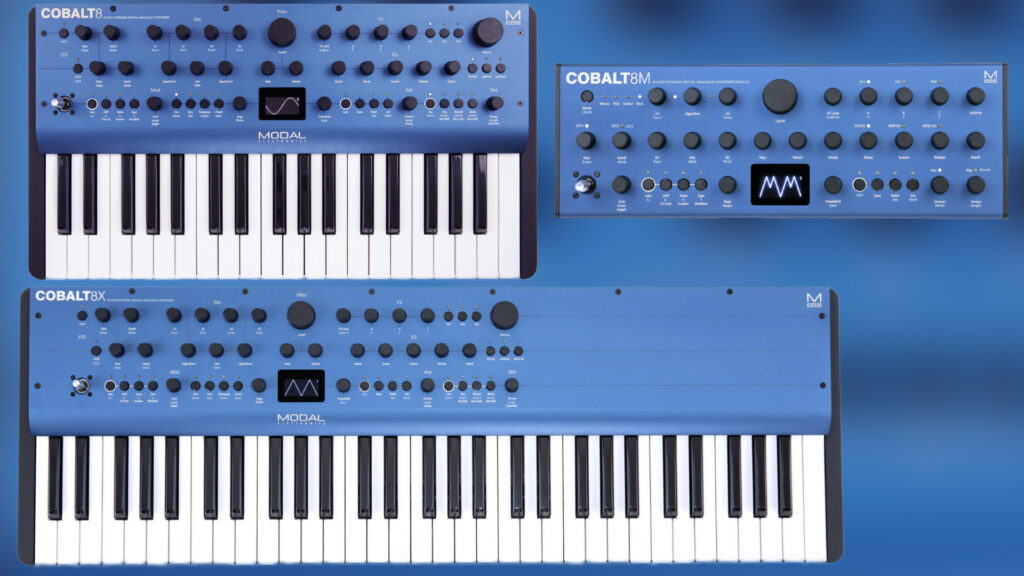
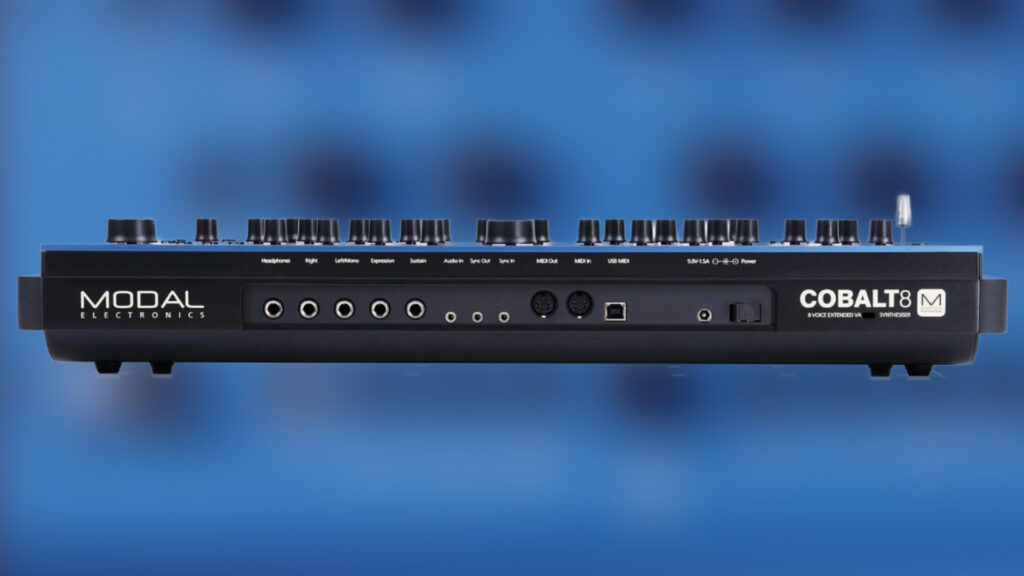
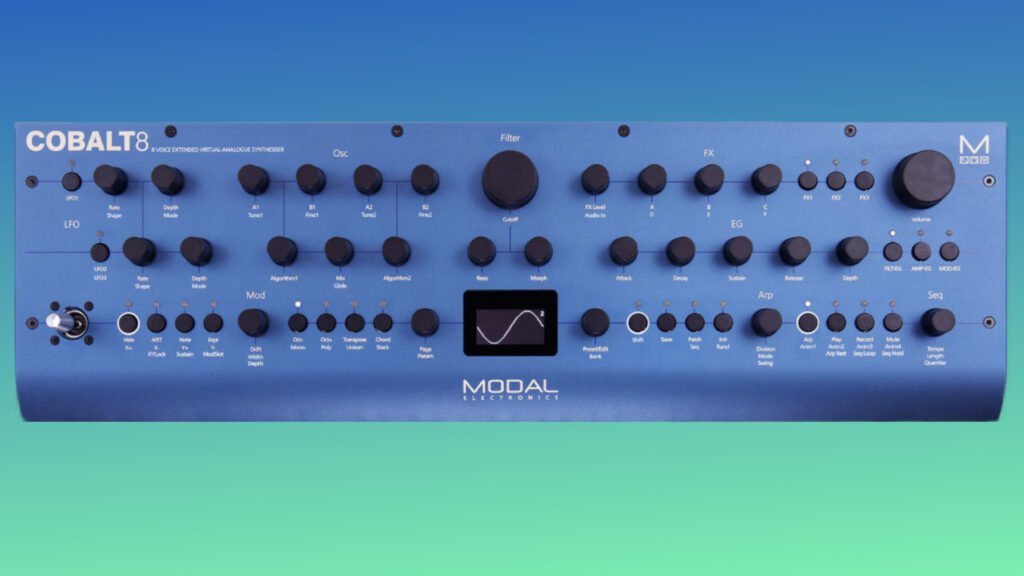

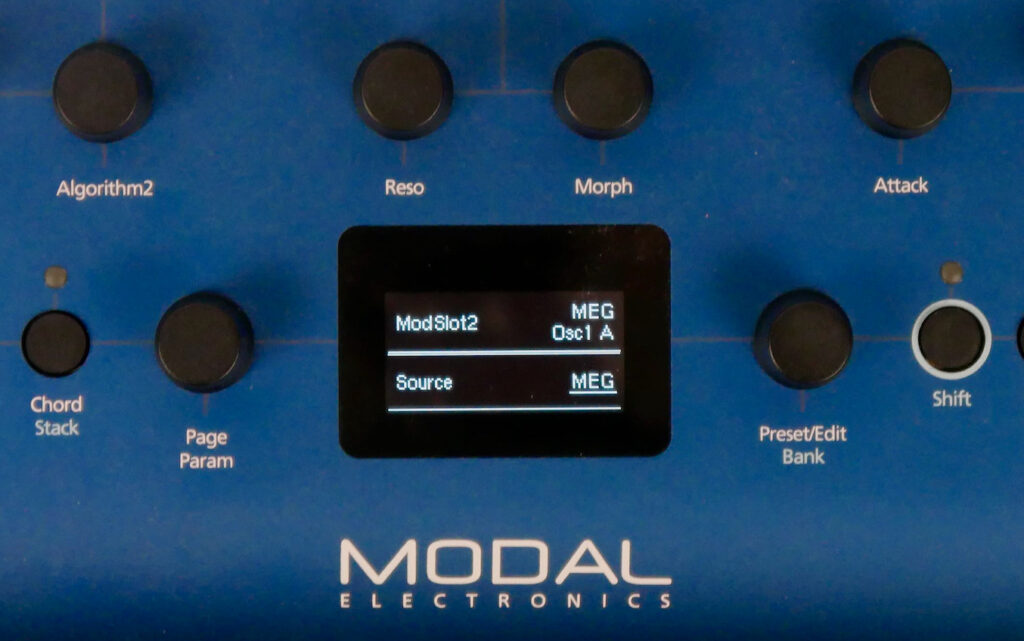


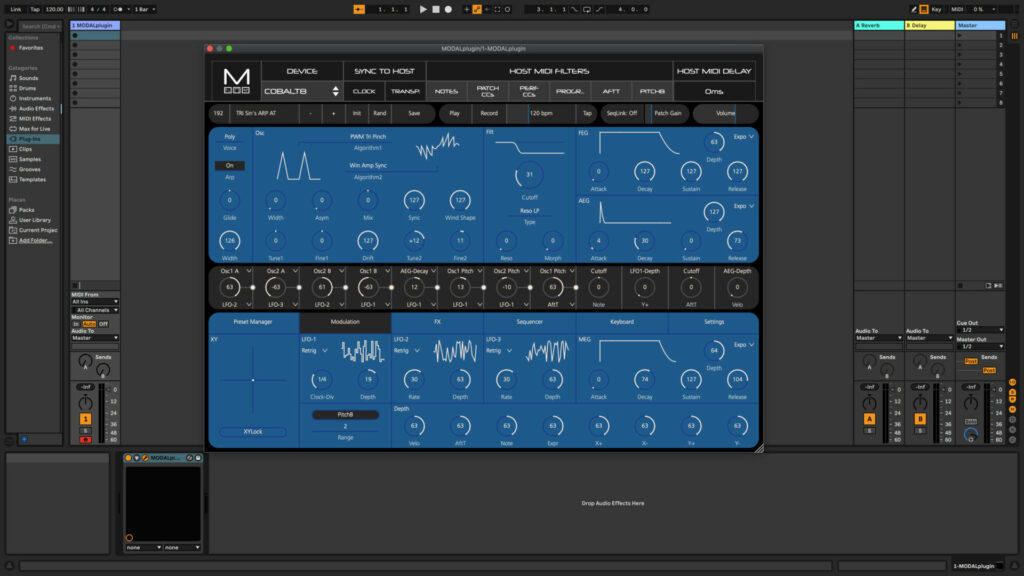
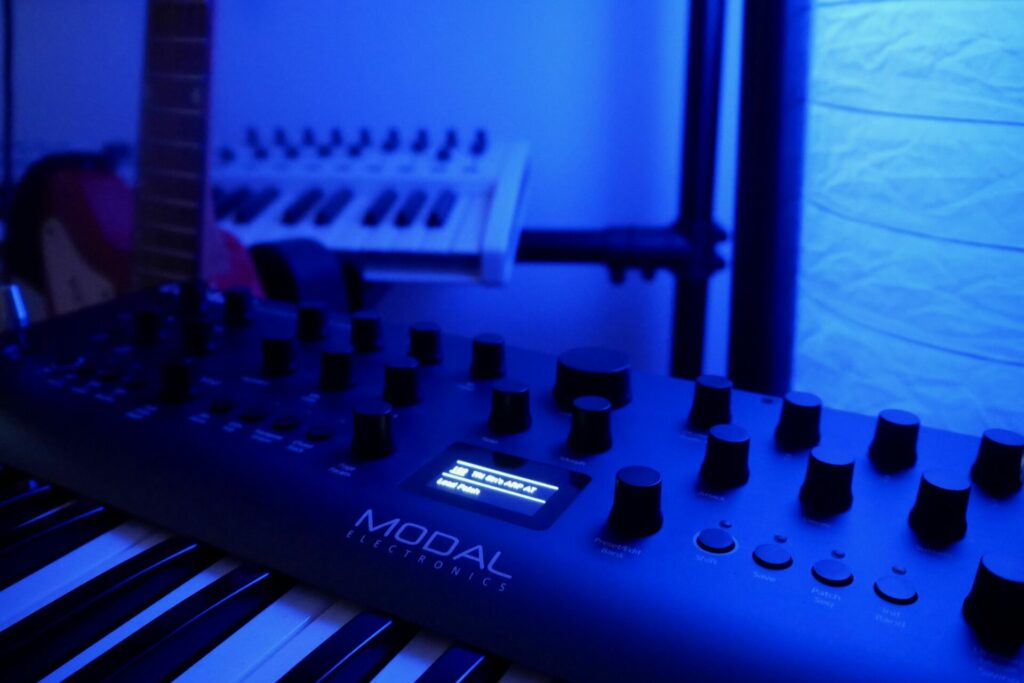
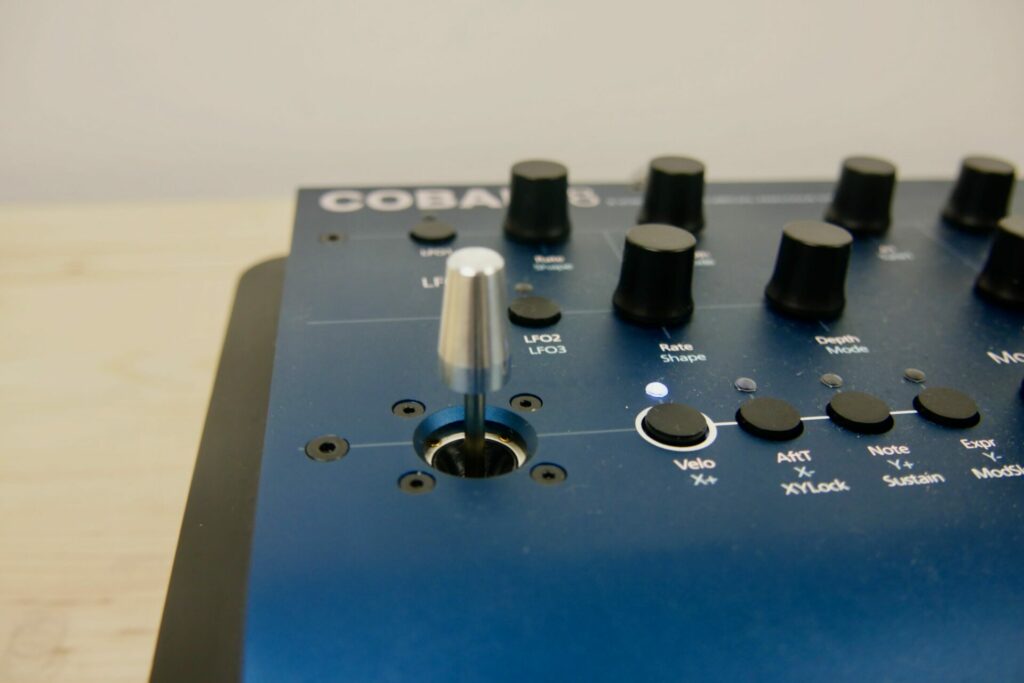

 Modal Cobalt8M
Modal Cobalt8M



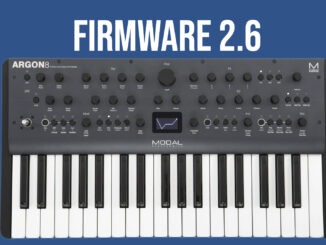
Just got module ,very nice build ,layout, been following VAs since Korg Prophecy , love analogue too , not a purist ,still love Novation ks4 module ,, may get Argon next , Modal hopefully will bring a multimbrial module for the bed , hopefully a really good sequencer too , love waking switching creating , going back to sleep again , see ye all in Astral , oh nice price ,Thanks so much